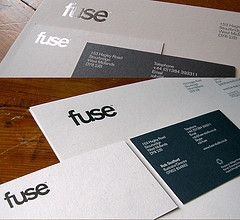Studio Graphic Design

what is it like to work at a graphic design studio?
I’m currently an in-house designer and have evolved passed my current role. My freelance work has gained some peer admiration and i feel its time to look for a position in a professional studio.
But I’ve no idea how things run, what the general atmosphere is like, the pressure, the expectations etc. Anyone with some insight or links to articles/interview/videos would be most appreciated!
Take another look at your in-house agency and find ways to make it better. It’s not as bad as you think inhouse. You can lose your job in an instant in a real agency.
Agency Drawbacks:
1. Job Insecurity: You or your design team may be assigned only one or two accounts at a time. If they loose an account, they may loose you as well. Some agencies are not as well prepared to weather economic downturns as are the corporations that hire them.
2. Long Hours: These employers tend to “own you” and convince you that there is no life outside of your job. When you are just starting your career, “paying your dues” can be exciting, but it looses its appeal over time after you begin to develop other interests and priorities.
3. Burnout: Some agencies like to hire young designers, knowing they may only get 2-3 good years out of them before they move on, so they will work them until they are quite toasty. They also know that the pool of designers is huge and vacancies are easily filled after they leave.
Agency Benefits:
1. Great Creative: You tend to focus on one or two projects at a time and can devote more energy to experimentation. The projects you work on can be very prestigious and the final deliverables become premier portfolio pieces.
2. Great People: At an ad agency, there is a larger group of “creative types”, such as artists, writers and directors that collaborate on projects. This environment provides opportunity for more honest critiques and a higher level of inspiration can be derived from other members of the team.
3. Higher Budgets and Salaries: More money is allotted for custom photography, illustration, travel, and…you, provided you survive boot camp and advance to a senior or director level, which can take 3-5+ years
4. Cool workspaces: When I worked in Miami we had creative briefing sessions out by the pool… then we went swimming. There are some funky (good) spaces where the work environment is just a fun place to spend the day… good music, great food, friendly pets and mascots of varying species all add up to a great time.
5. Bonuses: Chances are you will share in the company’s successes by receiving an annual cash bonus that correlates to the year’s profits. They are great incentives to make you stay “just one more year”.
In-house Drawbacks:
1. Less Creative Challenges: Although there are some creative opportunities, a large quantity of “bread and butter” work with the same branded messages is produced in-house. This can get monotonous if you don’t find way to stay inspired. At times, there can be even no work at all.
2. Less Pay: I’ve noticed the salaries can be slightly less than agency and studio designers and there is a lower chance of receiving an annual bonus. Read on for some possible reasons why.
3. Dull Workspaces: Accountants and creatives work in the same environment. Enough said here.
4. Dress Codes: Goths and dreadheads might have a hard time getting hired, but then, they are the types that would probably not prefer working under such conditions anyway. Unless you are employed for Apple or Google, a more conservative dress is mandated.
In-house Benefits:
1. Job Security: Most established corporations have deep pockets and can afford to staff up on designers to make sure their services will be available on call. It is usually more cost effective for a company to have an in-house design staff than to pay for outside creative services. Even when you are idle, the company still saves money by keeping you.
2. Company Benefits: This has always been a good selling point for working in-house. High quality health insurance, disability, retirement, severance, daycare, etc., tends to offset generally lower salaries. These perks may appeal more to an older designer with a family and a mortgage than to a recent graduate, but they are very valuable part of the overall compensation.
3. Predictable Hours: “9-5” is pretty much the rule. There is usually little need to work overtime and lately, more employers are allowing for flexible workweeks.
4. Respectable Portfolio Pieces: If you work for a “Big Name” corporation, your portfolio featuring design pieces with a recognized brand will bolster your confidence and reputation when you decide to interview for your next job.
Busy Graphic Designer
Leave a Reply
You must be logged in to post a comment.